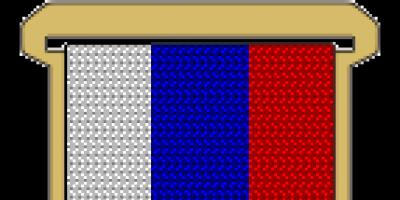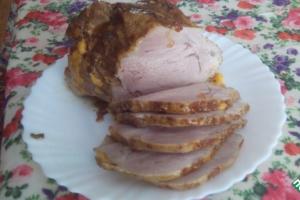How to insulate the floor on the ground floor is not an idle question for many owners of private houses who are busy improving the energy efficiency of their homes. Reducing heating costs with steadily rising energy prices is an important task that can be accomplished by thoroughly insulating all external surfaces of a building and adjacent structures.
Insulating the floor of a private house is a way to save energy
Why do you need to insulate the floor on the first floor?
The floor of the first floor is the boundary separating the internal warm rooms from an unheated basement or ground. In winter, cold outside air and frozen soil cool the foundation, plinth, and walls adjacent to the floor.
When cold and heat meet, condensation occurs. This leads to freezing of structures and their constant humidity. Fungi settle on the surface and in the depth, destroying not only wood, but also brick and concrete with the released substances. The floor covering and wall decoration suffer.
In addition to the discomfort caused by a damp, icy surface, heating costs increase. Through an uninsulated floor, up to 15% of the heat is released into the ground and atmosphere.
 Losses through an uninsulated floor reach 15%
Losses through an uninsulated floor reach 15% You have to maintain a more intense heating mode, which sometimes doesn’t help much. The air in the house warms up enough, but the floors remain cold.
The insulation of the floor of the first floor of a private house needs to be given Special attention. This will help maintain a favorable indoor microclimate, reduce costs during the heating season, and extend the service life of materials and structures.
Types of floor insulation and their characteristics
The construction industry produces a variety of materials for thermal insulation that meet the requirements of GOST and SNiP.
For floor insulation the following is used:
- granulated - expanded clay, blast furnace slag, vermiculite, foam glass;
- rolled - stone, glass, slag wool, polyethylene foam, polystyrene foam, technical cork;
- slabs with and without foil coating - basalt wool, expanded polystyrene, penoplex, wood concrete, plywood, chipboard or oriented strand board, chipboard, OSB;
- concrete-based mixtures - expanded clay concrete, slag concrete, foam concrete, polystyrene concrete, sawdust concrete.
- foams, liquids - polyurethane foam, ecowool, heat-insulating paints.
 Modern thermal insulators increase the energy efficiency of the home
Modern thermal insulators increase the energy efficiency of the home Together with insulation, a heated floor system is often installed - laying a heating cable, infrared emitters, electric mats or thin tubes filled with water. Heating is carried out from the power supply or a heating boiler.
General characteristics of thermal insulation materials:
- low thermal conductivity coefficient - 0.03-0.3 W/m°C, which effectively reduces heat loss even when laying a layer of small thickness;
- high fire resistance - most heat insulators belong to class NG, G1 or G2, which means non-flammability or low degree of flammability;
- biological inertness - materials do not rot due to their chemical composition or antiseptic impregnations, and are resistant to mold growth;
- durability - with correct installation and operation, the service life declared by the manufacturer is 20 years or more;
- low density and light weight - the structure of heat insulators is porous or fibrous, so the coatings made from them are light and do not create a load on the load-bearing structures;
- manufacturability - insulation is easy to lay on horizontal surfaces, fasten or apply with special equipment, it does not take much time.
 Polymer insulation is more effective natural materials several times
Polymer insulation is more effective natural materials several times The advantages of heat insulators include environmental friendliness. They do not emit harmful fumes and radiation into the environment. This is very important for using insulation indoors.
Choosing an insulation option
The method of floor insulation is chosen taking into account:
- base material and design;
- presence of a basement;
- characteristics of the heating system;
- climatic conditions.
IN wooden house, related to fire-hazardous structures, it is advisable to install thermal insulation from non-combustible materials - expanded clay, perlite, foam glass, mineral wool in rolls or slabs, polyurethane foam.
Concrete floors can be insulated with polymer insulators - penoplex, expanded polystyrene. They do not support combustion, but when heated they emit acrid smoke. According to the standards, such materials must be covered with a protective layer of cement-sand mortar with a thickness of at least 30 mm.
Fibrous and bulk insulation prone to absorbing water vapor from environment. A moisture barrier is created using a variety of films and membranes, which are laid on the side of unheated basements or underground areas. Insulators are often covered aluminum foil, the function of which is to reflect infrared rays into the room, additionally protecting it from heat loss.
 Before choosing a heat insulator, you need to consider all options
Before choosing a heat insulator, you need to consider all options When choosing insulation for the floor of the first floor, important criteria are:
- price category;
- labor intensity of work.
The most inexpensive thermal insulation is polystyrene foam, polystyrene foam, penoplex. Polymers are offered at a price of 1800 rubles/m³. A layer 50-100 mm thick is usually laid on the floor, which corresponds to 36-89 rubles/m².
Expanded clay will cost 1200 rubles/m³, in terms of square meter floor 240 rub. (layer 20 cm).
Basalt wool in rolls or unstitched mats costs on average 170-180 rubles/m².
The cost of installation is calculated based on the established prices for work in the construction market. If we do the repairs ourselves, we can install the insulation without the help of crews.
The least labor required when installing thermal insulation from foam plastic and related materials or mineral wool. Laying expanded clay or slag is more difficult, they specific gravity 400-600 kg/m³. To move and fill 100 m² of floor with a layer of 20 cm, you will need 20 m³, which is 8-12 tons. For such work you need at least an assistant, and preferably 2 or 3.
Ecowool is an increasingly popular cellulose insulation material. It is applied professional equipment, creating pressure. This type of insulation cannot be installed independently. The price per square meter is quoted by specialized companies. It ranges from 170 rubles/m² and depends on the surface configuration and layer thickness.
 Cotton wool blowing is carried out by professionals
Cotton wool blowing is carried out by professionals You can scatter ecowool over the surface manually, similar to granular materials. The quality of such insulation is significantly lower than with dry blowing.
Climatic conditions impose certain requirements on the choice of floor insulation. For example, in cold Siberian regions, insulating the surface with expanded clay will require laying a layer of about 40 cm (determined thermotechnical calculation). Therefore, it is advisable to carry out the work using lightweight thermal insulators with a lower thermal conductivity coefficient.
Thermal insulation with bulk materials
The oldest bulk insulation is dry earth. Later, people began to use wood shavings or sawdust. They are still used now, impregnated with antiseptics and fire retardants or mixed with lime, cement, or clay. But the most popular insulation is obtained by swelling of shale clay.
It is easy to use, inexpensive, and not liked by rodents. A layer of expanded clay can be spread over the ground by first spreading waterproofing. It will protect the material from moisture.
 Expanded clay is very easy to use
Expanded clay is very easy to use To insulate the floor of the first floor, a mixture of granules measuring 15 mm and smaller fractions is used to fill the gaps between large elements. The layer thickness is at least 20 cm. Thermal insulation is performed using dry, wet or a combined method.
The sequence of “dry” work using bulk insulation:
- Fill the space between the wooden floor joists with expanded clay, vermiculite or other materials.
- Subfloors are laid from MDF, plywood, boards, chipboard, OSB.
- Stacked finishing coat.
“Wet” floor insulation:
- Expanded clay is mixed with cement-sand mortar.
- Expanded clay concrete is laid on the base.
- Level, wait until completely dry.
- Arrange for a clean finish.
With the combined method, a layer of dry insulation is first poured, then filled with cement-sand mortar. Level and after hardening lay Decoration Materials. You can lay a reinforcing mesh in the screed for strength.
 Screed on dry expanded clay
Screed on dry expanded clay Flaws loose insulation materials- tendency to shrinkage, moisture. To level them out, during installation the granules need to be compacted and protected with waterproofing from the side of possible wetting.
Insulation with roll materials
Basalt wool is the most common floor insulation in private homes. Produced in rolls, mats or slabs. The first two types are inexpensive and loose, designed for thermal insulation of wooden floors. The slabs are denser, stronger, but more expensive. Are used under concrete screed.
Algorithm for laying rolled materials:
- Waterproofing - films, membranes - is spread over the boards or panels of the subfloor.
- Insulation 10-20 cm thick is laid between the logs without gaps and without excessive compaction, the layers should overlap each other.
- A vapor barrier is placed on top, which will not prevent the evaporation of moisture from the heat insulator if it gets wet.
- Counter slats are installed along the joists to create space for ventilation.
- The insulation is completed by a finishing coating with an additional layer of sound insulation.
 Insulation with rolled mineral wool
Insulation with rolled mineral wool If foil varieties are used, pay attention metal surface towards the room. Heat rays should be reflected into the room.
Installation of slab insulation
Expanded polystyrene and penoplex are types of polystyrene foam. They consist of closed balls filled with air. Due to their structure, polymers have the lowest thermal conductivity among building materials- 0.03 W/m°C and are widely used in private housing construction for thermal insulation of floors on the ground floor.
Expanded polystyrene is very unpretentious - it does not absorb moisture like mineral wool or expanded clay. It can be laid on soil, concrete or bedding. During operation, it does not lose its properties for a long time, since it does not compact over time.
Laying polystyrene foam is an easy task. Main installation steps for ground floors:
- Prepare the base - compact the bedding, pour in a rough screed.
- Lay a waterproofing film.
- The slabs are mounted by aligning the groove and tongue along the edges of two adjacent elements.
- Spread another layer of waterproofing.
- A reinforcing mesh is placed on top and a screed is poured.
Work is carried out in the same sequence when insulating a concrete monolith, with the exception of the installation of bedding and rough screed.
 Penoplex boards are easy to lay yourself
Penoplex boards are easy to lay yourself If you lay a foil film on top, then the base for installing a warm floor system is ready.
Concrete floors or floors on the ground with mineral wool slabs are insulated according to the following scheme:
- On a dense base - gravel backfill or concrete - lay waterproofing in 2 layers with an overlap of 15-20 cm.
- Install mineral wool slabs, making sure that no gaps remain.
- Another layer of waterproofing is spread on top, which will protect the screed from leaks of cement laitance.
- Pour a concrete screed with a thickness of 50 mm.
- Arrange for a clean finish.
The greatest efficiency in floor insulation can be achieved if:
- carry out thermal insulation of adjacent structures - plinth, foundation, blind area;
- protect the insulation from moisture with waterproofing, and provide a ventilation gap of at least 50 mm for water evaporation;
- fill the joints and gaps between the slabs with scraps of material or polyurethane foam;
- to prevent rodent infestations, use special fine-mesh (up to 8 mm) meshes; they are laid in places where animals can access them;
- if you lay it on a layer of insulation flooring, stepping back from the wall by 10 mm, an additional noise-insulating effect will be obtained.
The decision on how and with what to insulate the floor of the first floor is made by the owner. The advantages of thermal insulation are obvious - while reducing the cost of heating indoors in winter, they remain comfortable conditions. Modern materials are accessible and technologically advanced.
From the author: Hello, dear reader! The heat in the room directly depends on high-quality coating floor. Therefore, when starting to make repairs, first of all, think about how to insulate the floor in an apartment with your own hands. We can focus our renovation on installing additional heat sources and new windows, but this may not be enough.
If the floor covering is defective, all the heat will go into interpanel joints, corner cracks and basement or the floor below. If you love your neighbors, then this is justified, but if you are the owner of an apartment on the first floor, then this is quite unreasonable, you will agree.
Important: high-quality flooring will retain up to 30% of the heat in your apartment!
Insulation from the basement
One of the options for solving the problem of insulation in a home on the 1st floor - thermal insulation of floor slabs in the basement.
Important: Before carrying out work in the basement, coordinate all work with the Housing Office.
There are several ways to insulate the floor covering on the basement side:
- insulation or . On concrete base, by using liquid nails, sheets are attached, the gaps between which are filled with polyurethane foam. For better waterproofing, we glue the mounting polyethylene film onto the insulation, making a small overlap (up to 15 cm);
- spraying polyurethane foam. Despite the high cost, this option durable, has high thermal insulation properties, does not absorb moisture, and is heat-resistant.
Important: insulation concrete floor from the basement will not solve the problem of retaining heat in your apartment, but will only help strengthen the thermal insulation on the outside of the room, avoid dampness and mold.
Insulation methods
Let's consider several budget methods using materials with high thermal insulation properties:
- Wood-shaving insulation.
- Mineral materials.
- Polymer: polystyrene foam, penoplex, expanded polystyrene.
Each method has its own advantages and disadvantages, but initially you must decide on the functionality and size of the insulated room and your financial capabilities.
Insulation of a wooden base
The most traditional method of insulation - This is the laying of thermal insulation material in the space between the joists. Before insulating a wooden floor, decide on the further course of work and outline the installation diagram for logs and beacons.
 Source: http://pol-master.com
Source: http://pol-master.com
Important: After preparing the flooring and installing the joists, lay a layer of vapor barrier, extending it 5 cm onto the wall.
 Source: http://pol-master.com
Source: http://pol-master.com
Now you can lay the selected insulation between the joists and cover it with another layer of vapor barrier. You can start installation wooden planks, thick plywood, OSB/GVL sheets and finishing coating.
Bulk materials
Wood-based materials are considered to be of the highest quality and easiest to use. These include the following types of insulation:
- ordinary sawdust/special mixtures: sand+cement+sawdust+lime;
- plywood - involves two laying layers with different thicknesses (1st layer - up to 8 mm, 2nd layer - up to 12 mm) and mandatory gaps between the sheets to prevent shrinkage and creaking of the floor;
 Source: http://teplo.guru
Source: http://teplo.guru
- Chipboard is the most easy way insulation of concrete floors, optimal thickness sheet - 20 mm;
- ecowool is a high-quality, environmentally friendly, but expensive insulation material. There are several methods of application between joists: laying with special equipment and manually filling with dry mixture. Note that when laying by machine, material savings can be up to 40%.
 Source: http://www.nashpol.com
Source: http://www.nashpol.com
Mineral insulation
How else can you insulate the floor? Consider using mineral materials, such insulation materials include:
- mineral wool;
- cement-based building mixtures.
Mineral wool is considered the most popular material for insulating housing on the 1st floor and attic spaces. It has excellent soundproofing and fireproof characteristics, is not subject to deformation from temperature changes, mold infections, and is vapor-tight.

Expanded clay is a clay-based thermal insulation material with an affordable price range and a high degree of environmental friendliness of its components, but it still has disadvantages. Unlike mineral wool, it has high moisture permeability and fragility.
Important: to improve the performance of expanded clay, it is practiced to use it with cement mortar. Such a screed not only increases the thermal insulation performance, but also increases the strength and water resistance of the coating.

Polymer materials
The use of polymer materials in insulation is gaining popularity. Quality, availability and a large selection on the construction market allow you to immediately begin installation. Note that the process of installing polymer materials is extremely simple and even beginners can do it!
Among polymer materials it is worth noting:
- penoizol - liquid polymer material with a foamed structure;
- polystyrene foam and its improved form - polystyrene foam (excellent for concrete floors);
- polyurethane foam - liquid insulation, applied by spraying up to 10 cm thick;
- Penoplex is a modernized version of polystyrene foam.
Today, penoplex is becoming more and more popular. Let's figure out how to properly insulate a floor with penoplex.

The floor surface is one of the coldest in the apartment, especially on the first floor of the house. This is due to the characteristics of concrete, the severity of cold air and the fact that there are cracks in the floor through which cold from the basement penetrates into the apartment.
Heat loss through the surface of floors can account for up to a third of all thermal energy. To avoid this, high-quality thermal insulation is necessary. It is quite possible to do it with your own hands.
Options for thermal insulation materials
Materials suitable for floor insulation must have sufficiently low thermal conductivity. Most of Such materials can at the same time insulate the room from noise.
The most popular options are:
- Mineral wool – inexpensive material, effective both as insulation and sound insulation. Cotton wool is very easy to install, fireproof, and resistant to biological contamination. However, it absorbs water very easily, which requires good waterproofing. In addition, this material can release glass particles into the air, which can cause allergies.
- Expanded polystyrene and other types of foam - polymer materials that are resistant to moisture and fire. They do not deform, do not allow heat to pass through, and absorb noise.
- Bulk materials– expanded clay or wood shavings. They have excellent thermal insulation properties and can form a leveling layer when constructing a dry screed.
All these materials are good in their own way; the choice is based on operating conditions. Whichever material is more convenient is the one worth using, big difference there is no between them.
Wood floor insulation

When insulating floors in an apartment on the first floor wooden house thermal insulation material is usually placed in the spaces between the joists on which the decorative coating.
Related article: Bathroom tiles: how to choose for floors and walls
Insulation of wooden floors in an apartment occurs as follows:
- The old covering material is dismantled.
- A vapor barrier is laid - usually a simple polyethylene film. The film strips are laid overlapping and secured with tape. The film must be applied to the walls so that the edges eventually protrude above the surface of the finished floor. They can be trimmed later.
- Insulation is being installed. If bulk material is used, it is poured between the joists, using them as beacons for leveling the insulation using the rule. Other types of thermal insulation are rolled out close to the joists, avoiding even the slightest cracks.
- If absorbent cotton wool is used, it is additionally covered with another layer of film to protect it from moisture on all sides.
- Leveling slabs of plywood or gypsum fiber sheet are attached to the joists on top of the insulation. You can skip this step and immediately lay the floorboard.
- Any type of decorative covering can be installed.
Insulation of floors on concrete base

Most often, the floors of the first floor are panel apartment building are structures made from reinforced concrete slabs. Concrete itself is a porous material that conducts heat well, which is why it remains cold in almost any conditions.
In addition, floor slabs are almost never joined tightly enough to prevent air from passing through the cracks. As a result, a lot of heat flows into the basement from the first floor.
Screed

One of the most common methods of thermal insulation is laying insulation under cement screed with your own hands. The insulation of the screed is carried out in this way:
- The old coating is removed down to the base. The old screed is also removed.
- Floor slabs are repaired if necessary, and joints are sealed. Then the surface is thoroughly cleaned of debris and remnants of the old screed, and vacuumed with a construction vacuum cleaner.
- Waterproofing is being carried out. A thick film is laid over the base. The edges of the material need to be placed on the walls. The edges, overlapping each other by 10 cm, are secured with adhesive tape.
- The selected insulation is laid on top of the waterproofing layer. Sheets of expanded polystyrene and unwound rolls of glass wool should lie close to each other.
- The insulation is covered with an additional layer of film.
- A reinforcing mesh is placed on the insulation. It is needed in order to increase the strength of the screed.
- The cement-sand mixture is poured. The thickness of the screed must be at least 50 mm at its highest point, otherwise during operation it may become covered with cracks and begin to crumble.
- The surface of the dried screed is covered with two layers of primer for final leveling, strengthening and clogging of pores in the concrete.
- The finishing coating is laid on the finished screed.
Related article: Bedroom interior design. Small bedroom design. Classic style. Photo
Dry insulation on joists

The process is similar to insulating floors in an apartment on the first floor of a wooden house, with the only difference being that in this option the logs will have to be installed on a reinforced concrete base with your own hands.
Insulation along the joists is carried out as follows:
- The concrete base is cleaned of old coating, screed and debris.
- The floor is waterproofed. To do this, you can use bitumen or polymer mixtures, applied with a brush or roller, like paint. Less efficient, but cheaper and quick way– lay plastic film.
- Wooden logs are installed a meter apart from each other, no more, so that the floors do not sag. These logs can also be used as beacons for filling expanded clay. It is important to ensure that the upper edges of the joists are in the same plane.
- The selected heat-insulating material is laid. The insulation should be installed close to the joists, avoiding any gaps.
- The floor covering is formed from plywood, gypsum fiber sheets or fiberboard. The thickness of this layer should be about one and a half centimeters. To do this, the material can be laid in two layers, so that the slabs lie crosswise and the joints do not coincide. The sheets are fastened with glue and self-tapping screws.
- Any type of finishing coating can be installed.
Spray insulation
Another way to ensure thermal insulation on the ground floor is professional insulation with a thin layer of polyurethane foam. It forms a seamless polymer surface about 7 cm thick on the floor.
The polymer is applied using special equipment that delivers the material in the form of an aerosol under high pressure. In just a few seconds the substance hardens and turns into durable foam. In terms of its effectiveness, such insulation is superior to all other methods.
In addition, polyurethane foam does not need waterproofing. The service life of the material is estimated at tens of years.
Alternatives
If the heat loss in the apartment is insignificant, you can not lay an additional layer of insulation, but simply use a finishing coating with a fairly low thermal conductivity index. For example, carpet insulates the floor of the first floor quite well. Carpets with long pile have even better insulation properties.
Anton Tsugunov
Reading time: 4 minutes
Thermal insulation of apartments, especially in old buildings, often leaves much to be desired. First of all, this applies to floors in apartments located on the ground floor. As a rule, the room is separated from an unheated basement only by a concrete floor slab, which does not have good thermal insulation properties, which is why all the inhabitants of the apartment feel uncomfortable during the cold season. How to insulate the floor in an apartment yourself to save the situation and make your home warm and cozy?
What materials should be used for floor insulation?
First of all, such materials should be:
- Durable. After all, the floor is the surface that experiences the heaviest load in the apartment. Therefore, the insulation must withstand significant pressure.
If the selected type of thermal insulation does not have high strength, then you should choose a laying method that does not involve large loads on the thermal insulation material.
- Light. There is no need to create additional load on the floors. In addition, lightweight material is more porous, which means it retains heat better.
- Moisture resistant. The insulation should not lose its properties when wet or moistened, or should be protected by reliable waterproofing.
- Durable. It is advisable to carry out such a procedure as insulating a concrete floor only once during the entire period of residence in the apartment. It takes too much time, effort and money, even if everything is done with your own hands.
Note! Floor insulation in an apartment almost always has by-effect in the form of reducing the height of the room due to the thickness of the thermal insulation.
How to insulate the floor in an apartment?
Let's consider which materials will be most preferable in the case of insulation of the concrete floor of the first floor.
- Expanded clay. Some time ago, this material was quite often used for floor insulation. Its main disadvantages are low moisture resistance and a fairly large thickness of the thermal insulation layer.
- Perlite. It surpasses expanded clay in thermal insulation properties, but is heavier.
- Expanded polystyrene or polystyrene foam. Very convenient for do-it-yourself floor insulation. They are not afraid of water, rodents and microorganisms, absolutely harmless. However, polystyrene foam is quite fragile and less durable than polystyrene foam boards.
- Mineral wool. Do-it-yourself insulation of a concrete floor is most often carried out using this particular material. In addition to thermal insulation properties, it also has good sound insulation, is light in weight and has a relatively low price.
The use of mineral wool for floor insulation involves the construction of a frame made of logs and the mandatory use of waterproofing, since when wet mineral wool loses its properties.
- Cork based insulation. It has excellent qualities, but due to its high cost it is used quite rarely.
Methods for insulating floors
To insulate a concrete floor on the first floor, it is not enough to simply lay warm linoleum or thick carpet on the floor. There are three options with which you can solve the problem of floor insulation:
- using sheets of plywood or chipboard;
- concrete screed over the insulation layer;
- using a lag structure.
Each of these methods has its own advantages and disadvantages. But regardless of the option chosen, it is necessary to comply general principles laying thermal insulation.
- The old floor covering must be removed. Ideally, you need to get to the concrete floor slab. If this is difficult to implement, for example, it is laid on the floor ceramic tile, then linoleum or carpet with a thick backing can be laid on chipboards without removing the tiles. The main thing is that the surface is smooth. And here wood coverings Before insulating the floor, it is better to dismantle it so as not to encounter problems in the future.
- Floor insulation must include mandatory waterproofing. Concrete is famous for its ability to pass and even attract water. Therefore, it is necessary to reliably protect the room from moisture penetration.
- The surface must be leveled before laying insulation. It's easier to do this on initial stage than later leveling the floor with joists or screed.
Insulation using chipboard or plywood
This is the fastest and easiest way to insulate the floor in an apartment, which does not involve the use of special insulation. Using it, you can make a thermal insulation substrate with your own hands in a short time before laying linoleum or carpet. However, you need to keep in mind that this method cannot be called ideal option insulation of the floor of an apartment located on the ground floor, since it provides a relatively low level of thermal insulation. Floor insulation work is carried out in the following sequence:
- The old base is cleaned of dirt and dust.
- To ensure waterproofing, a layer is laid on the base polyethylene film, the joints of which are taped.
- Before laying sheets of chipboard or plywood, it is necessary to create a thermal gap of 1.5–2 cm between them and the walls. This will avoid warping of the coating caused by the expansion of sheets with temperature changes.
- The coating slabs are laid in two layers offset from each other. Thus, the sheets of the top layer must overlap the seams formed between the slabs of the lower one. Dowels are used to fasten the sheets.
- The seams are treated with a solution of putty and oil paint. You can use reinforced mesh.
- A finishing coating in the form of carpet or linoleum is laid on the resulting substrate. You can simply press it down with baseboards. Another way is to glue the carpet to a thermal insulation backing using bustilate.
Insulation under the screed
This method will require much more effort than insulation chipboard sheets. But the thermal insulation that this method provides will be much better. Simultaneously with the increase thermal insulation properties You can also level the floor surface. How to insulate a concrete floor in an apartment under a screed?
- Initially, the existing covering is removed from the floor, preferably down to the concrete slab. After this, the surface is cleaned of dust and debris.
- A vapor barrier layer is laid that will prevent moisture from penetrating into the insulation. The vapor barrier film must be placed on the walls approximately 3–5 cm, and the joints must be taped.
- The insulation is laid tightly, and then another layer of vapor barrier is laid.
If polystyrene foam or expanded polystyrene is used as insulation, a second layer of vapor barrier can be omitted.
- A metal mesh is laid over the entire surface of the floor and attached around the perimeter of the room.
- The screed is being poured. The thickness of the concrete layer after drying must be at least 5 cm, otherwise such a substrate may simply not withstand the loads and crumble. The entire screed must be poured at one time, using a 200 grade solution, stirring the cement in the appropriate proportion.
- After the solution has dried, the surface is primed. The flooring is laid on top. It can be laminate, linoleum or carpet.
Performing thermal insulation along joists
If the selected thermal insulation material is not able to withstand significant loads, then it is necessary to carry out insulation along the joists. For the design, even bars with a cross section of 50 by 100 mm are suitable, which it is highly advisable to pre-treat with an antiseptic solution. It will protect the logs from the penetration of fungus and extend their service life.
- After clearing the surface of debris, waterproof it. To do this, using a brush, you need to apply a layer bitumen mastic, also covering walls to a height of 5 cm.
- The logs are laid from timber; the first and last logs should be located close to the wall.
Tip: so as not to cut once again insulation material supplied in the form of rolls or sheets; the distance between the logs can be chosen equal to its width, but not more than 90 cm. When using bulk material, the rule applies: the thinner the logs, the smaller the distance between them.
- The laid logs are leveled and secured with anchors. You don’t have to fasten it if the beams rest securely against the wall.
- Having laid insulation between the joists, if necessary, lay a layer of vapor barrier and lay sheets of plywood or chipboard, fixing them with self-tapping screws on the joists. It is recommended to lay two layers, shifting them relative to each other. A gap of 1.5–2 cm is left between the sheets and the wall.
- A finishing coating, which is a laminate, carpet or linoleum, is laid on the substrate thus obtained.
Independent floor insulation on the first floor is not particularly difficult, and the variety of materials and technologies allows you to choose one of several methods that is most suitable in terms of labor costs and financial investments. Let your apartment always be warm and cozy!
The floor is the coolest surface of the room. Up to 20-30% of the heat can escape from a room through a poorly insulated floor! This mainly happens on the first floors with an unheated basement. At the same time, heating bills increase, but the rooms are still cold. In this case, it’s time to start thinking about how to insulate the floors in the apartment. This will help reduce heat loss and create a more comfortable indoor climate.
Insulation of floors is relevant not only for a private home. It is often necessary to insulate the floor in an apartment on the ground floor, in this case it is simply necessary. It is possible to carry out thermal insulation work with your own hands, the main thing is to choose the right material and become familiar with the installation technology.
Materials for floor insulation must meet certain requirements: lightness, strength, durability, high thermal insulation characteristics.
For materials with the necessary properties, relate: mineral wool, expanded polystyrene, polystyrene foam, expanded clay, wood shavings.
Mineral wool. Effective for sound and heat insulation. Fireproof (has high fire resistance), not susceptible to mold and mildew. Flaw– this is hygroscopicity, the ingress of moisture reduces its properties.
Expanded polystyrene, foam plastic. Lightweight, durable, retain heat well, and do not allow external noise into the room. They are not afraid of water, do not deform, and are easy to install.
Expanded clay, wood shavings. Bulk materials, inexpensive, environmentally friendly. They have quite significant disadvantages. The shavings are afraid of moisture and are susceptible to rotting; insects and mice infest them. Expanded clay is not afraid of water and is durable, but it can place a strong load on structures if the insulation layer is too large.
Penoplex. Modern material, is rapidly gaining popularity. Simple technology installation, it is possible to perform insulation yourself. Available in slab form.
Methods for insulating the floor of an apartment on the first floor
When choosing a method for thermal insulation, you should take into account the design features of the building and the peculiarities of the insulation installation method. Insulation of floors in a ground floor apartment can be done in several ways:
- Installation of thermal insulation from the outside, from the basement side. For insulating the floor of an apartment located on the ground floor, this method is very effective.
- Floor insulation using joists. This will require complete dismantling old covering.
- Using a screed over the insulation.
All that remains is to choose a more convenient method. After all the work is completed, heat leaks will stop, a comfortable microclimate will be created in the apartment, and heating bills will decrease.
Insulation of the floor of a first floor apartment from the basement side with polystyrene foam
In ordinary houses they are used concrete plates floors that border on the ground floor with the basement. An unheated and damp room takes in an overwhelming amount of heat. To achieve maximum results, it is necessary to carry out work to insulate the floor of the apartment from the basement. How to do it?
- You don't need expensive insulation materials. The floors in a ground floor apartment from the basement can be insulated with foam plastic 50 mm thick.
- Before you start installing the insulation, you need to use foam to blow out all the cracks between the slabs and around the perimeter on the basement side.
- Further concrete surface Treat the slabs with a deep penetration liquid primer. It is applied with a brush.
- All that remains is to insulate the subfloor with sheets of foam plastic. They are glued to the ceiling using adhesive composition Ceresit or construction adhesive, they will ensure reliable fastening of the insulation to the surface.
- When the glue has completely hardened, the gaps between the plates must be sealed using sealant or polyurethane foam.
This method can be used to insulate wooden floors. Only in this case, it is recommended to additionally fix the foam sheets with the help of double-umbrellas. This way you will retain heat in the house and additionally protect wooden floors from exposure to dampness from the basement.








